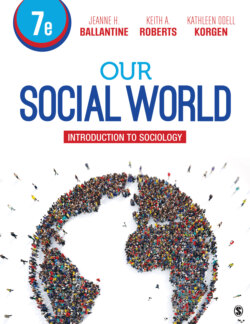Читать книгу Our Social World - Kathleen Odell Korgen - Страница 77
На сайте Литреса книга снята с продажи.
Meso- and Macro-Level Theories
ОглавлениеMeso- and macro-level theories consider large units in the social world: organizations (e.g., General Motors or the Episcopal Church), institutions (such as family, education, religion, health care, politics, or economies), societies (e.g., Canada or Mexico), or global systems (e.g., the World Trade Organization or World Bank). For example, Hector’s government at the national and international levels affects his life in a variety of ways. As Brazil industrializes, the nature of jobs and the modes of communication change. Local village cultures adjust as the entire nation gains more uniformity of values, beliefs, and norms. Similarly, resources such as access to clean water may be allotted at the local level, but local communities need national and sometimes international support to access resources, as illustrated by tribal elders from Tanzania in the photo on the next page. We can begin to understand how the process of modernization influences Hector, this village in Tanzania, and other people around the globe by looking at two major macro-level perspectives: the structural-functional and conflict theories.
▲ The Tanzanian village elders in this photo continue to have authority to make local (micro-level) decisions about the traditional irrigation canals being improved in their village, but their expanded water supply is possible in part because of international financial support (meso- and macro-level decisions).
© Karen Porter
